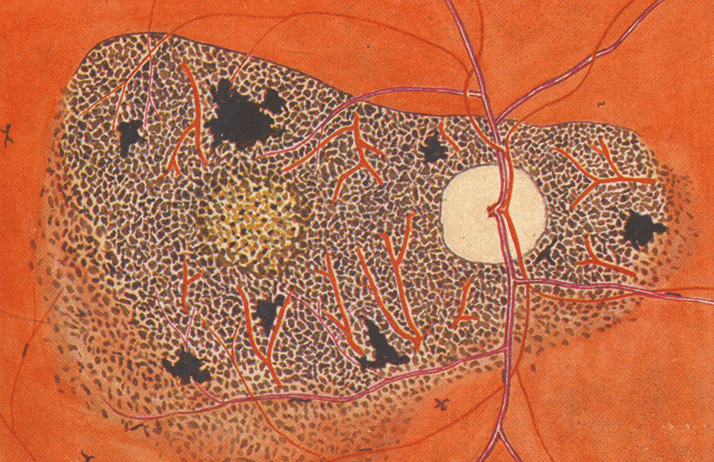August 29, 2018

Conflict across borders affects river blindness eradication efforts in Uganda. Ongoing conflicts in South Sudan and Democratic Republic of Congo could undermine disease control programs in border regions of Uganda. According to Edridah Muheki, lead doctor of the Uganda Onchocerciasis Elimination Expert Advisory Committee, cross-border transmissions pose the biggest threat to the river blindness campaign, as true elimination of the disease requires collaboration between bordering nations. [Outbreak News Today]
Monoclonal antibody proves effective in suppressing multidrug-resistant HIV. Ibalizumab, a monoclonal antibody that blocks human immunodeficiency virus 1 (HIV-1) from entering and replicating inside human cells, has been shown to assist in suppressing the viral load in patients for whom other medicines had previously stopped working. Half of the original 40 patients enrolled in the multisite Phase 3 study saw a decrease in viral load to below 200 copies by week 25 of the study. Ibalizumab received approval in March 2018 from the US Food and Drug Administration. [New England Journal of Medicine, ContagionLive]
Local transmission possible as travel-associated Zika cases overlap with California vector territory. Laboratory tests by the California Department of Public Health showed that 435 of its 588 confirmed Zika cases between 2015 and 2017 were viremic while in California, and of those, 279 were residents of counties where Aedes mosquitoes were detected. Authorities reported that active surveillance activities found no mosquitoes carrying Zika virus, however the data show that transmission between infectious cases and susceptible humans is possible. [Emerging Infectious Diseases]
Infection data on travelers to China could be useful for public health policy. In the first study of its kind, researchers from the National Science Foundation of China quantified and categorized instances of infectious disease at the 272 international entry-exit points in mainland China. The data, which were collected through a routine program in which suspected cases were tested for infection, found an incidence rate of 28.3 cases per million travelers each year. Of the 22,797 diagnoses, 74% were in Chinese nationals and 67% were in people traveling for tourism, suggesting a need for stronger vaccination protocols. [The Lancet: Public Health, Comment: The Lancet: Public Health]
Researchers are mapping Ebola’s movement to minimize further infection. In the midst of the current Ebola outbreak in the Democratic Republic of Congo (DRC), researchers at the University of California at Los Angeles-DRC Health Research and Training Program are focusing on both prevention and treatment in their attempts to map the progression of the disease. The team is working to record where people live, work, travel, and seek healthcare. The current mapping project has the two-fold purpose of understanding the epidemiology of the disease and aiding emergency response by identifying hotspots, important landmarks, and population-dense areas. [VOA]
Furthering research on fractional dosing and maintaining immunity to yellow fever. In response to the current outbreak in Brazil, public health officials are again considering fractional-dose vaccines, which were used during a 2016 yellow fever (YF) outbreak in Democratic Republic of Congo and Angola. Because most YF vaccines contain considerably more than the dosage recommended by the World Health Organization, the vaccine lends itself to fractionation, as one-fifth doses can stretch the limited supply to a much larger population. Authorities recommend that recipients of fractional-dose vaccines get revaccinated before traveling to endemic areas. [New England Journal of Medicine, PrecisionVaccinations.com]
An emerging bacterial threat: drug-resistant and sexually transmitted. Mycoplasma genitalium is becoming a cause for concern in the United Kingdom and the United States due to drug resistance. Current research shows that between one and two percent of the population are infected, but fewer than 50% of treated cases respond to traditional broad-spectrum antibiotics. Patients are often asymptomatic, but infection is linked with irritation in the urinary tract for men and infection of the reproductive organs for women. Infection may also be linked to complications with pregnancy and infertility. [US News & World Report, Clinical Infectious Disease]
Unconventional interventions can reduce virulence of infectious organisms. Iron supplements given to laboratory mice reduced the lethality of bacterial infections and aided in host survival, according to Salk Institute scientists, who found that a short course (20 days) of iron supplements was sufficient to keep infected mice healthy even after supplements ended. The iron increased glucose levels in the intestine and suppressed the virulence of the bacteria. In the future, the researchers hope to explore the idea of using the weakened bacterial strains found in the mice to create new vaccines. [Cell, Science Daily]
Refuting proposed link between antibiotics and autism spectrum disorders. A Canadian population-based cohort study of early childhood antibiotic use and autism spectrum disorders (ASD) included all births in Manitoba between 1998 and 2016. Both the unadjusted (0.93) adjusted (0.91) hazard ratios indicated a reduced risk of ASD in patients with early exposure to antibiotics (having received any antibiotics within their first year). Furthermore, there was no association between the number of antibiotic courses or length of courses and ASD. [International Journal of Epidemiology]
Combination therapy: A new take on combating drug-resistant bacteria. A recent study shows that combining medications can increase susceptibility and leads to varying minimum inhibitory concentration (MIC). As Gram-negative strains of bacteria are largely resistant to antibiotics on the market, researchers are combining medications in the hope of restoring their efficacy in treating infections. When combining protein synthesis inhibitor antibiotics with colistin, a last resort antibiotic, efficacy was restored for colistin-resistant infections. [EurekAlert, BIDMC, Antimicrobial Agents and Chemotherapy]
Image Credit: The Ophthalmologist (watercolor by Harold Ridley: “Fundus oculi in Onchocerciasis, Ghana, 1944”)











